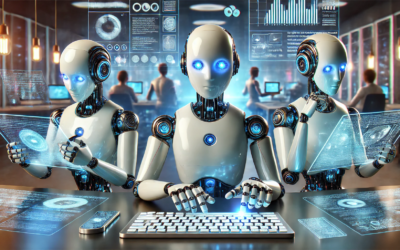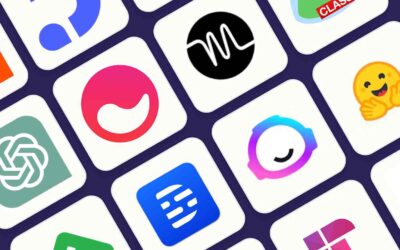In the rapidly evolving world of software development, artificial intelligence (AI) is no longer a luxury—it’s a necessity. With the release of OpenAI’s GPT-4.5 and the anticipated or emerging capabilities of GPT-5, the way developers write code, debug, design systems, and collaborate is undergoing a fundamental transformation. These AI models are not just better at generating text—they’re becoming indispensable coding companions, productivity boosters, and decision-support tools.
This article explores the major ways GPT-4.5 and GPT-5 are changing developer workflows.

1. Code Generation at Scale
GPT-4.5
GPT-4.5 brought notable improvements in code generation, especially in handling larger codebases and managing context across files. Developers using GPT-4.5 experience:
-
Contextual code suggestions: The model better understands the relationships between functions, files, and APIs.
-
Improved prompt chaining: Developers can build up prompts incrementally, and GPT-4.5 tracks the logical flow more consistently.
-
Better support for domain-specific languages: Whether it’s SQL, HTML, LaTeX, or Solidity, GPT-4.5 generates more accurate syntax and semantics.
GPT-5
GPT-5 takes it further with:
-
Persistent memory (in ChatGPT): This means you don’t need to repeat your stack, goals, or constraints. The model remembers preferences across sessions, allowing for more efficient pair programming.
-
Multimodal code support: GPT-5 understands diagrams, screenshots of code, and terminal outputs. Developers can upload an image of an error or a flowchart, and GPT-5 will analyze and assist accordingly.
-
Autonomous code agents: GPT-5 powers tools that can complete multi-step development tasks autonomously, such as writing a full-featured login system with front-end and back-end components.
2. AI-Powered Debugging and Refactoring
Both GPT-4.5 and GPT-5 streamline debugging and refactoring:
-
Automated debugging: Paste in logs or stack traces, and the models can often pinpoint the root cause instantly.
-
Code smell detection: GPT-5 is particularly strong in identifying anti-patterns and suggesting best practices, especially in legacy codebases.
-
Automated refactoring: Refactoring a monolith to microservices, or modernizing old PHP code to Laravel, becomes faster and more accurate.
Example
A developer using GPT-5 might paste a 300-line function and ask, “Can you refactor this into modular, testable components?” GPT-5 will return cleaner, segmented code, complete with test scaffolds and documentation.
3. Enhanced Test Generation and CI/CD Integration
GPT-4.5 introduced strong capabilities in test generation. With GPT-5, testing has become far more integrated:
-
Unit, integration, and E2E tests: Generated with minimal prompts.
-
Test coverage analysis: GPT-5 can identify gaps in existing tests and propose new cases.
-
CI/CD integration: Developers can now use GPT models in GitHub Actions, CI pipelines, and bots to enforce linting, run tests, and even comment on pull requests intelligently.
4. Documentation and Communication
Writing technical documentation is often a chore. GPT-5 simplifies this:
-
Auto-generated API docs: From source code or Postman collections.
-
Inline documentation: Docstrings, usage comments, and README templates tailored to your stack and audience.
-
Meeting summaries and coding reports: GPT-5 can summarize dev standups or sprint retrospectives using transcripts or bullet points.
This is especially beneficial for remote teams and open-source projects where clarity and documentation are key.
5. Multimodal Pair Programming
A standout feature of GPT-5 is multimodal interaction. Developers can now:
-
Show and tell: Drag in a screenshot of a code editor or a UI mockup, and GPT-5 will reason over it.
-
Voice-based coding: Using integrations with tools like Whisper and Sora (OpenAI’s video model), GPT-5 supports voice instructions and coding walk-throughs.
-
Live debugging via terminal logs or visuals: Developers can record a bug, upload the video, and ask GPT-5 for debugging advice.
6. Collaboration with AI Agents
Both GPT-4.5 and GPT-5 enable workflows where AI agents work alongside human developers:
-
Task decomposition: You can assign a broad task like “Build an expense tracker app in Flutter”, and GPT-5 will break it into steps, manage state, and suggest folder structures.
-
Code reviews: GPT-4.5 introduced automated pull request reviewers. GPT-5 enhances them with better reasoning and risk assessment.
-
Long-running coding sessions: Thanks to persistent memory and tool integration, GPT-5 can “stay on task” through longer projects, learning preferences and constraints as it goes.
7. Real-Time Collaboration in IDEs
With tools like GitHub Copilot (powered by OpenAI) and Cursor, GPT-4.5 and GPT-5 are embedded directly in IDEs:
-
Natural language to code: Just type “create a function that calculates the IRR from cash flows” and the function appears.
-
Context-aware code completion: GPT-5 tracks your open files, variables, and dependencies with more accuracy, reducing irrelevant suggestions.
-
Live project support: Some IDEs are now exploring GPT-5-powered agents that can track tasks across files, flag issues, and even manage TODOs.
8. Security and Compliance Assistance
As security becomes more critical, GPT-5 assists with:
-
Static analysis: Identifying vulnerabilities like XSS, SQL injection, and buffer overflows.
-
Compliance checks: Ensuring that code meets privacy, logging, and encryption policies.
-
Security test generation: GPT-5 can write fuzz tests or simulate penetration attempts.
Challenges and Limitations
Despite the power of GPT-4.5 and GPT-5, developers must be cautious:
-
Hallucinations still exist: The models might return plausible but incorrect code.
-
Need for human validation: AI can suggest code, but responsibility lies with developers to verify it.
-
Toolchain integration: Seamlessly incorporating GPT models into legacy dev environments requires effort.
Conclusion
GPT-4.5 and GPT-5 are not just productivity boosters—they’re redefining how software is built, tested, and maintained. As these models continue to evolve, developers are moving from writing every line of code manually to guiding AI collaborators through high-level goals.
The future isn’t about replacing developers; it’s about amplifying them. With the right balance of trust, validation, and creativity, GPT-powered workflows promise to unlock unprecedented levels of software quality and speed.



